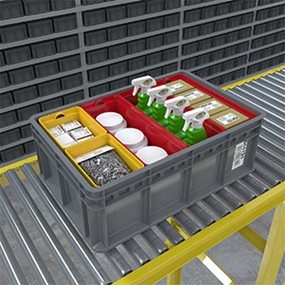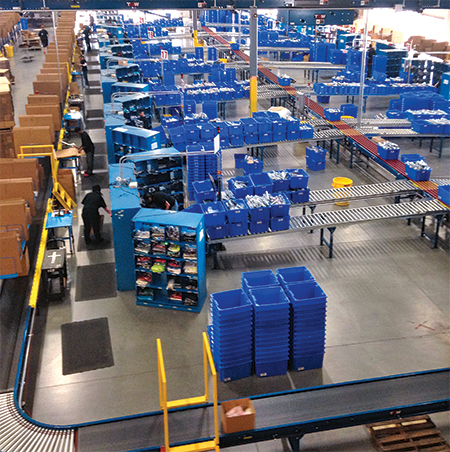Plastic Totes and Storage Containers: The Perfect Companion for Conveyer Belt Systems and Assembly Lines
Steel conveyor belts were invented during the turn of the 20th century with the introduction of assembly lines being introduced by Henry Ford in 1913. Over the years, businesses in a variety of industries have implemented conveyor belts into their operations to make moving items faster and easier than the job would be with other equipment and human labor. Today, the same advantages that conveyer belts provided to coal mines and assembly lines during the 1900s has made them an integral part of fulfillment centers, distribution centers, and manufacturing facilities.
One major difference in the way conveyor belts are used today is the scale on which they are run. Thanks to global trade, some of these facilities actually require complex conveyor systems that cover several miles of area, sending plastic containers to a series of checkpoints before the items are removed from the containers, packaged, and sent to their destination. While corrugated cardboard boxes have been used for a long time and are still used in smaller conveyor systems, many of these high-volume businesses have turned to plastic containers, totes and/or bins for their conveyor systems. Many feel that these conveyor containers offer a number of advantages that simply can’t be overlooked.
The Perfect Fit
Large-scale manufacturing facilities, distribution centers, and fulfillment centers all use conveyor systems but the similarity between the systems used by these types of businesses mostly ends there. Each has their own setup that has been custom designed to suit their specific needs. The uniformity of plastic containers makes it easier to design a system that is configured for the dimensions and weight of the totes being used.
Easy Identification
Manufacturers and distributors alike rely on radio-frequency identification (RFID) tags to identify the contents of containers by simply scanning a barcode. The increasing popularity of totes for conveying has resulted in containers made with areas to place RFID bar code labels. These labels can be scanned from several feet away to determine what is in the container, which checkpoint it needs to go to next, and to obtain information about products being shipped out.
Easy to Handle
Simply put; the larger a cardboard box is, the more difficult it is to handle. With conveyor totes, handlers don’t have to contend with flat, smooth sides that make it difficult to handle when needed. The plastic containers are ergonomic, meaning that they don’t put a strain on joints or put you at risk of injury when adding to or removing from a conveyer.
Designed for Performance
The needs of any operation can make it challenging to keep a conveyor system working flawlessly. For example, if the containers must be moved on an incline, they may fall back and bump against the other crates. Simply using totes with a bumper around the top will keep containers separate.
Better for the Facility
One of the best things you can say about plastic containers is that they are not made of corrugated cardboard. Although cardboard boxes serve a lot of useful purposes, there are some characteristics that make them less than suitable for use on a conveyor system. Movement of the boxes releases dust that collects in the rollers or under the belt. Conveyor systems that use cardboard boxes have more frequent maintenance worries which translates into a less-efficient system.
Cardboard boxes are not sanitary and are prone to insects and contamination. Cardboard was not meant to be used repeatedly and must be replaced after a minimal number of uses. Plastic containers, on the other hand, produce no dust, are waterproof, and do not lose their integrity even after hundreds of uses.
Flexible Design Options
The use of conveyor belts differs among businesses and industries, and so does the need for a plastic container that is right for each job. Plastic totes come in a variety of sizes and styles, including:
- Flip-Top Nesting
- Bulk Handling
- Collapsible
- Straight-Walled with Lids
- Fold Down Gates
- Drop Gates
- High Temperature Construction

In some instances, different colored totes can be used to identify the contents and simplify the separation of products by identifying them at a glance.
If plastic containers and totes are considered the perfect container for use on conveyors, it is due in part to the qualities of the material in addition to the many options being offered by the manufacturers who make them. Whether you require a basic container for your assembly line needs or a custom design to perfectly compliment your conveyor system, there is a plastic container that is a perfect choice for you.


